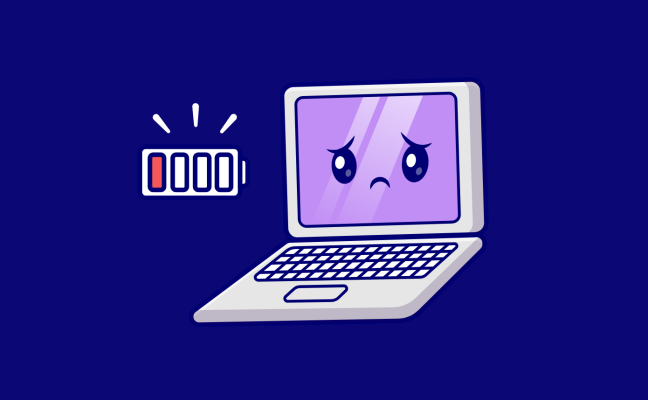
In modern business, laptops are essential tools for employees. However, battery failures can disrupt productivity, cause downtime, and increase operational costs. Proactively monitoring laptop batteries helps IT teams prevent unexpected issues, extend device lifespan, and optimize asset management.
What to Track in Laptop Batteries
When monitoring batteries, IT teams should focus on key metrics:
- Battery Health – indicates battery wear and remaining lifespan.
- Capacity – compares actual charge capacity to the original design.
- Temperature – prevents overheating and safety risks.
- Charging Status – ensures power systems function properly.
- Usage History – tracks cycles and trends to anticipate failures.
How to Fetch Battery Details Manually
If you don’t have specialized monitoring tools, you can use built-in OS utilities:
Windows
PowerShell:
Get-CimInstance -ClassName Win32_Battery | Select-Object -Property *

Key Fields and Their Meaning
- Caption / Description:
Internal Battery— basic description of the battery. - Name / DeviceID:
5B10W13935/19373Sunwoda5B10W13935— manufacturer or model-specific identifiers. - Status:
OK— the battery is functioning normally. - Availability:
3— indicates the device is running and available. - BatteryStatus:
1— this usually means “Discharging.” Common codes:- 1: Discharging
- 2: AC Power
- 3: Fully Charged
- 4: Low
- 5: Critical
- Chemistry:
2— likely Lithium-ion (Li-ion). - DesignVoltage:
15131mV → 15.131 V nominal design voltage. - EstimatedChargeRemaining:
51— battery is about 51% charged. - EstimatedRunTime:
114— estimated 114 minutes remaining at current usage. - PowerManagementSupported:
False— this battery does not support advanced power management features. - PowerManagementCapabilities:
{1}— indicates basic power management (probably “device can be disabled”).
Battery Report:
powercfg /batteryreport /output "C:battery.html"Generates a detailed report on capacity, cycles, and usage.
Linux
upower -i /org/freedesktop/UPower/devices/battery_BAT1
Why Manual Monitoring Isn’t Enough
While manual checks work for a few devices, larger organizations need a centralized approach. Centralized monitoring allows IT teams to track all laptops in real time, predict battery failures, and schedule proactive maintenance.
Modern Approach to Battery Monitoring
Centralized monitoring offers several advantages:
- Predict Issues Early: Detect battery degradation before it causes device failures.
- Reduce Downtime: Timely alerts and notifications prevent sudden interruptions.
- Efficient Asset Management: Detailed reports help manage lifecycle, plan replacements, and maintain compliance.
- Cost Optimization: Extending battery life and preventing emergency replacements reduces expenses.
This proactive approach ensures stable laptop performance, minimizes risk, and provides a reliable IT environment — exactly the strategy we’ve implemented in Zefsina.
Best Practices for Laptop Battery Monitoring
- Automate Data Collection
Continuous monitoring reduces errors and provides a complete view of battery health. - Monitor Battery Health Regularly
Track capacity and charge cycles to anticipate replacement needs. - Maintain a History of Battery Data
Analyze trends to predict issues and schedule maintenance proactively.
These practices create a more stable and secure IT environment, enabling proactive battery management.
Proactive Battery Replacement and Ordering
With Zefsina, businesses don’t just monitor battery health — the platform also helps schedule replacements and order new batteries in advance. By predicting which laptops need attention, IT teams can replace or order batteries before failures occur, ensuring that devices remain operational and employees stay productive.
Conclusion
Proactive laptop battery monitoring is essential for maintaining device reliability, reducing downtime, and managing IT assets efficiently. By combining best practices, automated alerts, historical tracking, and proactive replacement management, IT teams can prevent failures before they happen.
At Zefsina, we bring all these strategies together in a single platform, empowering businesses to manage their laptop fleets more effectively, reduce costs, and ensure uninterrupted productivity.